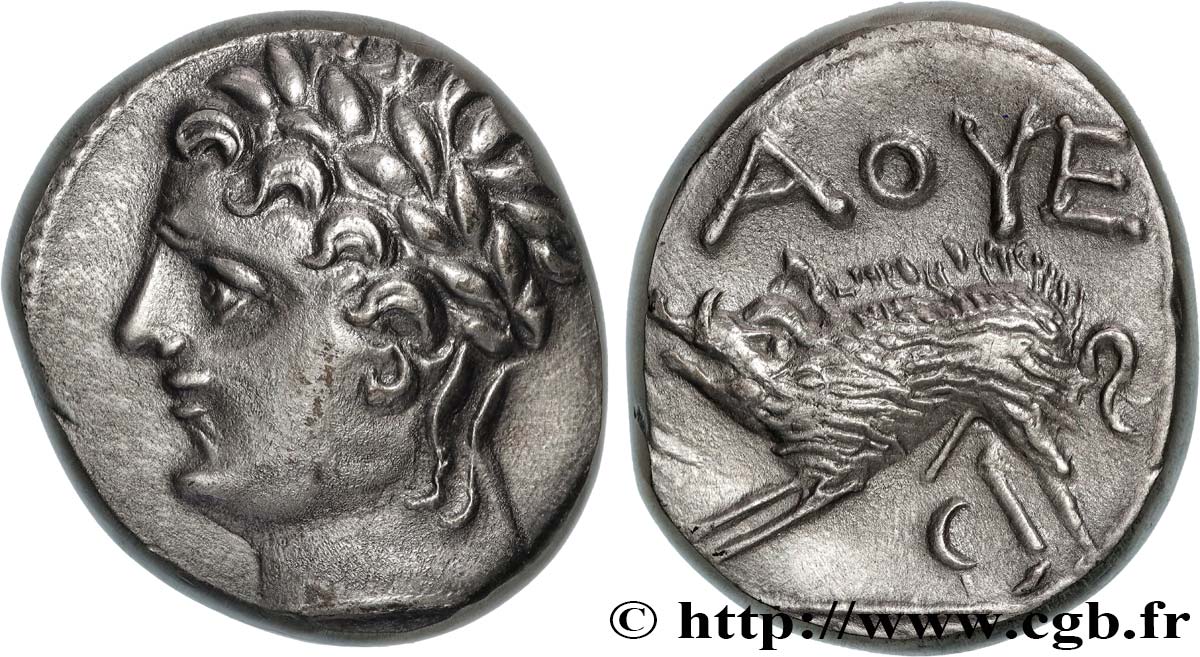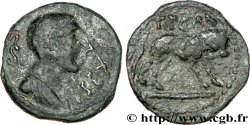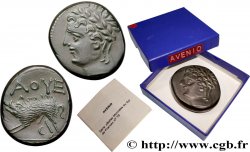fme_886377 - CAVARII (Area of Avignon and Orange) Médaille, Reproduction d’une hémidrachme d’argent, Exemplaire Éditeur
180.00 €(Approx. 192.60$ | 154.80£)
Quantity
Add to your cart

Type : Médaille, Reproduction d’une hémidrachme d’argent, Exemplaire Éditeur
Date: 1971
Mint name / Town : Monnaie de Paris
Quantity minted : 100
Metal : silver
Millesimal fineness : 950 ‰
Diameter : 50,5 mm
Orientation dies : 6 h.
Weight : 162,56 g.
Edge : lisse + corne 1 + 1971 + EE/C
Puncheon : Corne 1 (1880 -)
Coments on the condition:
Patine grise hétérogène. Quelques marques d’usure
Obverse
Obverse legend : ANÉPIGRAPHE.
Obverse description : Tête laurée d’Apollon à gauche.
Reverse
Reverse description : Sanglier passant à gauche.
Reverse translation : (Avenio/ Avignon).
Commentary
Médaille numérotée avec sa boîte cartonnée bleue.








 Report a mistake
Report a mistake Print the page
Print the page Share my selection
Share my selection Ask a question
Ask a question Consign / sell
Consign / sell
 Full data
Full data


